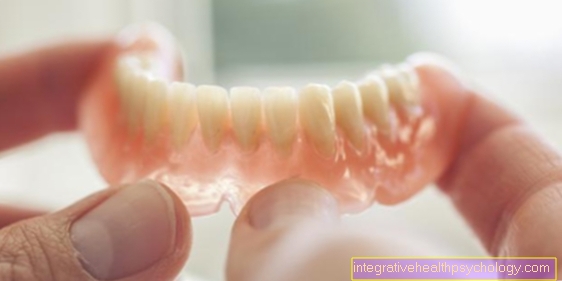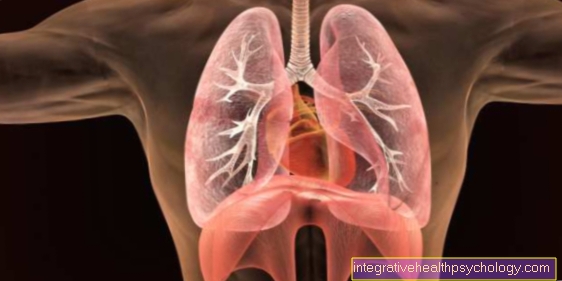Arterioles
definition
An arteriole is the smallest arterial vessel in the human body, which in the further course merges directly into a capillary. Arterioles are connected after the larger arteries and, together with the venules, represent the smallest blood vessels that are still visible to humans with the naked eye.
The main function of the arterioles is to regulate the flow of blood through the capillary bed and in this way control the blood pressure in the entire circulation. In order to be able to fulfill this function, arterioles are equipped with a muscular wall that they can contract or relax as required.
Its counterpart in the venous vessels is known as the venole, which is connected directly after the capillaries and becomes a larger vein as it progresses.

anatomy
Like arteries, arterioles are characterized by their three-layer wall structure. This consists of the inner intima, the media in the middle with smooth muscle cells and the adventitia towards the outside. However, these small vessels usually only have a one or two-layer layer of muscle cells, which are completely absent in the capillaries.
With the help of these muscle cells, arterioles can change their diameter and thus control blood flow. Together with the small arteries, they are considered to be the resistance vessels of the human body, as the contraction of the muscle cells can interrupt the blood supply to the subsequent tissue and thus raise the blood pressure in the circulation. In their entirety, they make up approx. 50% of the total resistance. This mechanism can be life-saving for the adequate blood supply to vital organs such as the brain and heart, especially in situations with a lot of blood loss.
Differences from the venules
In contrast to the arterioles, venules have only a very poorly developed media layer with almost no muscle cells. Only in the further course and after the union of several venules to form so-called collecting venules do individual muscle cells appear again in the wall structure. Venules therefore represent the exact opposite of resistance vessels (arterioles) and also have a very permeable wall through which fluid can be exchanged with the surrounding tissue. Certain cells can also pass through the venous wall, for example in the context of infections, which physiologically should not be the case with arterioles.
Shunt
The term shunt is understood to mean a connection between two usually separate hollow organs / bodies through which the passage of fluid is made possible. This can occur in the context of certain diseases or it can be artificially created due to a medical indication. Examples of this would be congenital heart defects and the so-called dialysis shunt, in which a connection between the arterial and venous systems is created. To do this, an artery is connected to a vein, bypassing the arterioles, the capillary bed and the subsequent venules, in order to artificially create access to a large vessel through which, for example, hemodialysis can be performed.






















.jpg)






